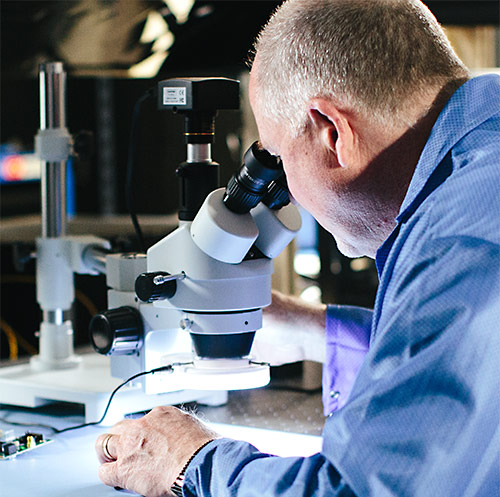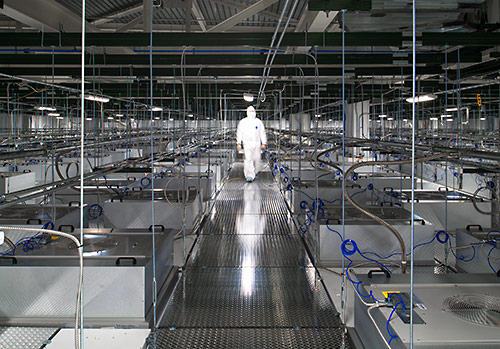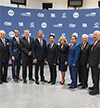Most communities have a core industry they nurture, investing in new ideas and technologies and developing partnerships with investors and stakeholders. As these industries expand, more companies move in to support them, creating a diverse and robust economy. For Detroit, it is automotive; for Silicon Valley, it is high tech; for Orlando, it is tourism.
“There is only one Theme Park Capital of the World, and that makes Orlando a highly desirable place to enjoy a truly magical vacation,” says George Aguel, CEO and president of Visit Orlando. “In a relatively short amount of time, Orlando has become one of the most recognized destinations in the world and the number-one travel destination in the United States.”
Tourism generates about $66 billion in revenues every year; in 2016 alone, visitors to Orange, Seminole, and Osceola counties contributed more than $5 billion in state and local taxes through their spending. This has paved the way for Orlando’s growth and influenced a dynamic and fast-growing economy.
Inspiration and Innovation
As an outcome of its tourism success, Orlando has become a leading destination for businesses — especially high-tech industries such as advanced manufacturing, defense and aviation, simulation technology, gaming software, and life sciences. These companies are drawn to Orlando because of the success of the theme park industry and the cross-disciplinary technology innovation.
Industries want to locate in thriving economies that are diversified and cooperative, and can show a long track record of solid support by state and local government. They want to be close to leaders in their fields that are known for innovation. For example, several technology companies have recently located or expanded in Orlando, including Luminar, a company that is developing a new sensing technology platform to enable safe, fully autonomous vehicles with major automotive partners including Volvo Cars, and Toyota Research Institute.
Because of the influence of Disney and other entertainment leaders, Orlando now has strong industry clusters in computer technology, electronics, IT and communication, and virtual and augmented reality — not to mention a mindset of innovative thinking and sharing. These technology resources, combined with the city’s outstanding infrastructure network, provide a vibrant business environment.
In fact, Orlando’s technology industry is the second-largest business sector in the area after tourism, contributing approximately $14 billion annually to the Orlando economy, a number that is expected to double over the next 10 years. The sector is driven by new developments in gaming, virtual and augmented reality, app and software development, modeling, simulation and training, healthcare IT, and financial technologies. Orlando supports more than 2,000 technology companies, ranging from startups to major companies employing hundreds of thousands of people. As a leader in modeling and simulation, Orlando is now leveraging this expertise for virtual reality innovations that impact education, healthcare, and defense.

“Our theme parks have worked hand-in-hand with the area’s modeling and simulation industry to create new physical worlds and virtual technologies, not only for our attractions but for a wide range of other fields, including medical training and even sports applications,” says Ken Potrock, president of Disney Consumer Products Commercialization and chairman of the Orlando Economic Partnership. “Our local colleges and universities support that engineering need with programs that include immediate career opportunities upon graduation. Tourism has enabled Orlando to become a premier destination for business development, including world-renowned high-tech industry clusters, a collaborative business environment, an energetic and entrepreneurial workforce, and a modern transportation infrastructure.
As one of the world’s most visited destinations, Orlando is uniquely positioned to expose and acclimate the public to AV technology. Orlando’s Central Florida Automated Vehicle Partnership was chosen as one of the U.S. Department of Transportation’s 10 designated autonomous vehicle testing groups.
Additionally, BRIDG, an industry-led public-private partnership for advanced sensors, photonics, and advanced nanoscale systems with a cleanroom laboratory/manufacturing facility, recently opened near the Orlando International Airport. Other research will focus on advanced semiconductor and photonics technologies.
Being a fun, top-ranked destination city also makes companies want to come to Orlando for meetings and conferences, adding value and excitement to the employee or client experience. As a result, the city has become the nation’s second-largest trade show destination. The Orange County Convention Center already attracts more than 230 events to the region, with about 1.5 million attendees contributing approximately $2.3 billion to the economy. To accommodate this expanding market, a new multipurpose venue is planned for the convention center. This 200,000-square-foot, flexible, divisible, column-free space with a combination of retractable and floor seating will accommodate up to 20,000 guests.
“When industry leaders come here for meetings and conventions, they’re exposed to a thriving business landscape experiencing tremendous growth across all sectors of the economy,” says Aguel. “That definitely puts us on the radar for companies seeking expansion opportunities in new markets.”
Infrastructure Is Key to Growth
To support the 72 million visitors who come to the city every year as well as its rapidly growing population, Orlando continues to expand its efficient, modern infrastructure. This transportation network provides businesses with the reliable and efficient access they need to reach their destinations, including major domestic and global markets. This is made possible by Orlando’s three international airports, including Orlando International Airport, which welcomes nearly 45 million annual passengers and was ranked No. 1 for customer service by J.D. Power & Associates.
“Transportation is critical to economic development, as you must be able to provide access for the movement of people and goods,” says Harry Barley, executive director of MetroPlan Orlando. “Investing in our transportation infrastructure creates immediate value in jobs, but also long-term value of much greater consequence.”
Outstanding transportation infrastructure is essential for businesses that transport products or require efficient means for business travel. From commuter rail service to highway systems to a multi-modal hub, Orlando continues to invest in its transportation infrastructure, including:
- $2.3 billion for I-4 Ultimate, an overhaul of Interstate 4 which connects the Gulf of Mexico to the Atlantic Ocean
- $3.5 billion express train called Brightline by All Aboard Florida connecting Orlando to Miami
- $3.5 billion renovation and expansion including a new intermodal facility designed to connect with future rail systems at Orlando International Airport
- $1.6 billion creation of the Wekiva Parkway, completing Orlando’s beltway system
- $650 million expansion at Port Canaveral
- $800 million investment in SunRail, the region’s commuter rail system
- $50 million investment in a coast-to-coast bike trail
“Looking into the future, all I see is continued momentum across all sectors of business,” says Potrock. “It is an amazing time for Central Florida. We have become one of the most vibrant regions in the nation and a real magnet for innovation and fresh thinking, and this community has really just begun to realize and believe in its enormous potential.”




